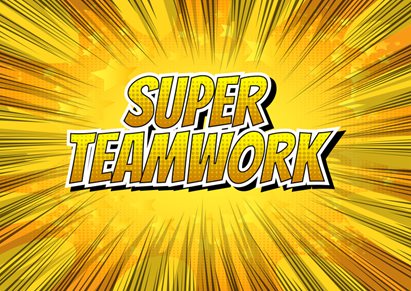How to rapidly build a high performing NEC project team.

This blog is developed from the previous blog 'how to rapidly build a high performing project team from diverse organisations' going down a level of detail in terms of tangible things that you can do and actions that are specific to the NEC Engineering and Construction Contract.
It is derived from 3 sources :
- the previous blog. To summarise it, rather than letting a team (hopefully) go through the un-managed approach of Forming-Storming-Norming-Performing, it is to deliberately manage them through the stages of Forming-Orientating-Creating-Norming and Performing & Sustaining. While the full blog can be found here, I will briefly recap within this article on what is happening at each stage and what we are trying to achieve before giving the practical tips;
- a session run at the 2016 BuiltIntelligence NEC Conference where the above model was applied by delegates to identify practical things that could be done to help a team through the stages, especially when using an NEC contract.
- my experience, both as a NEC trainer & consultant and facilitator.
.jpg) The Forming stage of NEC team development.
The Forming stage of NEC team development.
In the forming stage, peoples’ Task focus is low. At worst, they are just closed to other people, staying in their shell.
More commonly, they are concerned with finding out who’s who, seeking to know each one other's attitude, background and likely role. So we want to positively encourage this.
| General Things You Can Do |
NEC specific things you can do |
|
Select competent people : experience, skills, collaborative behaviours.
If the Employer, do the above as part of your Contractor selection process.
Be an assertive leader initially as people want consistent and clear direction, ground rules and structure; give small defined tasks to people.
Make sure the skills etc. match the proposed project organisation avoiding duplication and ‘fuzzy’ roles.
Build in early ‘getting to know you’ meetings, where people introduce themselves : name, role, experience, something outside of work.
Social events where people are forced / encouraged to mix with people they don’t know well.
|
Select a team with a balance of NEC knowledge.
The top (two) people from each Party need to get their act together very quickly, so they are giving out consistent messages to the wider team.
Let people know that will be using the NEC as intended : collaboratively and with good project management etc, and what actions individuals are anticipated to do under NEC.
Get people to reveal their past experiences of NEC and knowledge.
|
.jpg)
At the end of this stage, they should be intermingling, wanting to find out more about each other and opening up to each other.
Orientating People to the Task
In this phase, people are orientated to the Task by establishing a common understanding of where the project is now and where it has come from. This is so that, despite coming to the project from a variety of perspectives – for example, as an Employer’s person who has been involved for several years in its development versus a Contractor’s person with little or no knowledge – they rapidly get on the same ‘big picture’ page about why the project is being done; what it is; key risks & constraints; and how it is to be delivered.
| General Things You Can Do |
NEC specific things you can do |
|
Briefings to all participants on :
From the Employer :
- The reasons and drivers for the project;
- Funding issues
- Key non-technical constraints and risks e.g. political, funding, stakeholders etc.
- Why the Contractor was selected.
From the Designer :
- Why this design solution was chosen including most challenging areas;
- Key constraints, issues, risks and potential opportunities and interdependencies as they see it.
From the Contractor :
- Proposed approach and high level programme, inc important dates they need to meet.
- Key constraints, risks and potential opportunities and interdependencies as they see it.
|
Explain why the particular contract strategy was chosen.
Arrange ‘neutral’ external training, so everybody is on a similar page about what the NEC is about.
Go through contract documents highlighting key / unique aspects of contract.
Explain bid strategy, including how they make money on the job.
|
 Creating the High Performing Team
Creating the High Performing Team
Here, we are managing the team's development to create it's own merged goals which all parties can subsequently focus on delivering and creating a joint picture of how the people, systems, organisational structure etc. will integrate and work together in accordance with the contract, not despite it.
In other words, you are getting your snails in a row.
| General Things You Can Do |
NEC specific things you can do |
|
Combine important and common objectives from the Orientating phase into a joint specific statement of objectives which all participants can sign up to and focus on.
Develop success measures (KPIs) to track progress against the above objectives as the project progresses.
Jointly review each other’s, merge and enhance issue, risk and opportunity / innovation registers etc, so there is one project register for each.
Jointly identify Critical Success Factors or strategies that are needed to deliver the objectives given the threats, opportunities, issues and constraints etc.
Choose appropriate level of co-location.
Create common ‘defined’ terminology to be used by all, so everybody knows what each other is talking about.
Create ‘Values’ that people wish to work with and work through what these mean in practice : make specific to how sub-teams wish to work, not just wrt behaviours, but also processes, systems, organisation, R&R’s etc. Identify measures for whether people are ‘living’ these values which can be measured regularly.
Decide on an integrated organisational structure i.e. each Parties matches the other, and then decide who talks / communicates with whom about what and when.
Set up governance arrangements wrt a SMT sitting above the day-to-day contract administration, who monitor performance, make strategic decisions and are a tier of issue / dispute resolution.
Set up other non-NEC meetings as relevant e.g. design &/or quality review meetings.
Choose common systems which can be accessed by all, so there is ‘one version of the truth’.
Hold, at a minimum, a kick-off meeting for the above. Consider external professional facilitation.
|
Get people to identify what has worked on previous NEC projects and what has hasn’t. Select what has worked and is relevant to this contract. Don’t do what hasn’t worked !
Get training on the ‘how to’ of NEC, not just the what of the contract.
Expand the Contractor’s Programe to be the project programme i.e. it includes Employer's programme.
Use NEC terminology
Establish metrics for whether contract is being adhered to : most NEC contract management systems can report wrt adherence to timescales.
Identify delegations and then communication paths : who talks with whom and who contractually communicates with whom including internally e.g. can a PQS accept a quotation directly or does it have to go through the PM etc. Ditto for the Contractor.
Set-up regular meetings for NEC mechanisms with standard agendas, templates for recording & attendances. E.g. early warning / risk reduction meetings; accepting the programme; payment; compensation events, quality (resolving EWs that are TQs/RFIs, agree testing & inspection schedule, correction of Defects etc.).
Agree standard proformas & registers, or choose an NEC contract management system
|
 The Norming Phase
The Norming Phase
In this phase, participants are working through the detail of what was agreed in the Creating phase and starting to get used to working together, using the systems, proformas, protocols, Values etc that were agreed.
At the end of this phase, everybody should be moving together in the same direction.
| General Things You Can Do |
NEC specific things you can do |
|
Communicate the key points from the Orientating phase to the wider team.
Communicate the agreed project objectives, key threats and opportunities, issues, constraints, programme etc to the wider team.
Incorporate as ‘appropriate’ the above into the inductions. By ‘appropriate’, the needs and emphasis will be different for a management person versus a Subcontractor’s labourer who is on-Site for a week for example.
Jointly develop the various registers to include specific tangible responses and actions with named individuals to do them and ‘to-do’ dates.
Develop specific tangible actions with named individuals to do them and ‘to-do’ dates so that Critical Success Factors are ‘live’ rather than vague and fluffy intentions
Set up processes, systems, organisation, R&R’s etc. that reflect what was agreed in Creating phase.
Start SMT reviewing early actions and ‘kicking arse’ if not done..
Set up co-location arrangements based on how the team is best organised.
Nicely ‘police’ and encourage use of the common ‘defined’ terminology.
Nicely ‘police’, encourage and reflect on whether people are living the chosen Values. Develop measures & initiate surveys.
Make sure people are talking and communicating with whom they should do in the way agreed.
Ensure other non-NEC meetings are happening and review.
Social events calendar.
|
Update, merge, adapt to unique project circumstances and agree proformas, systems etc from previous projects. I.e. work through the detail. Start using them.
Review contract docs in detail : Z clauses, Works Information to identify anything missing, potential ambiguities / inconsistencies, constraints that can be challenged and actions.
Have an NEC ‘coach’ on-hand to give advice on implementation and be an impartial resolver of differences of opinion on contract matters.
Start developing the time window that the programme covers in detail as Subcontractors are appointed, risk responses are developed, site engineers understand what they have to build etc.
Start reviewing metrics for whether contract is being adhered to.
Are the delegations and communication paths working ?
Are the agreed meetings happening ? Are the agendas right ? Are there too many or too few people attending ? etc
Build in-time to stand back from the day-to-day :
- what’s working ? Can you do more of it ?
- what isn’t working ? Do less or something different.
- what is missing and needs to be put in place ?
If using an NEC Contract Management system, have :
- Short training on it (the best systems are fairly intuitive)
- A dummy contract which people can play on.
On a cost-based contracts, set up and agree monthly and external audit systems and protocols.
|
 Performing & Sustaining the team.
Performing & Sustaining the team.
In simple terms, keep doing what is working in the Norming phase with the emphasis on delivery. However, focussing on the Task to the exclusion of the team dynamic / culture and the individual will mean that the these start to disintegrate to the detriment of performance : you want everybody crossing the line and crossing it together.
However, whether NEC specific or not, do:
- regularly re-iterate, update & communicate key objectives, values, risks and CSF’s and actions etc.
- have regular surveys, reviews etc of KPIs for how the team is doing wrt ;
- moving towards its end project objectives – i.e. what the team is delivering;
- its process objectives e.g. speed of implementing CEs vs contractual timescales – i.e. how the team is delivering it
- living the Values and behaviours – also how the team is delivering the project, but harder to quantify.
- Look out for trends as well as exceptions as well as different perceptions e.g. PM team thinks collaborating, but Contractor does not !
- do have regular time outs to reflect on the above and to stand back from the day-to-day :
- what’s working ? Can you do more of it ?
- what isn’t working ? Do less or something different.
- what is missing and needs to be put in place ?
- ensure actions from registers etc are done by having SMT reviews of registers.
- recognise and reward achievement, both at an individual and team level.
Have joint briefings and trainings as necessary or desirable, whether related to NEC or not, or on NEC Contract Management system.
For more major changes in stages of the project e.g. going from an ECI phase to Construction phase, revisit the previous phases of team developement. This is both because of the changed circumstances and possibly to induct, even immerse, new people into the project team.
Many thanks to John Rayner who co-facilitated the session and wrote up the original session notes. The delay in writing it up in this format is down to me !